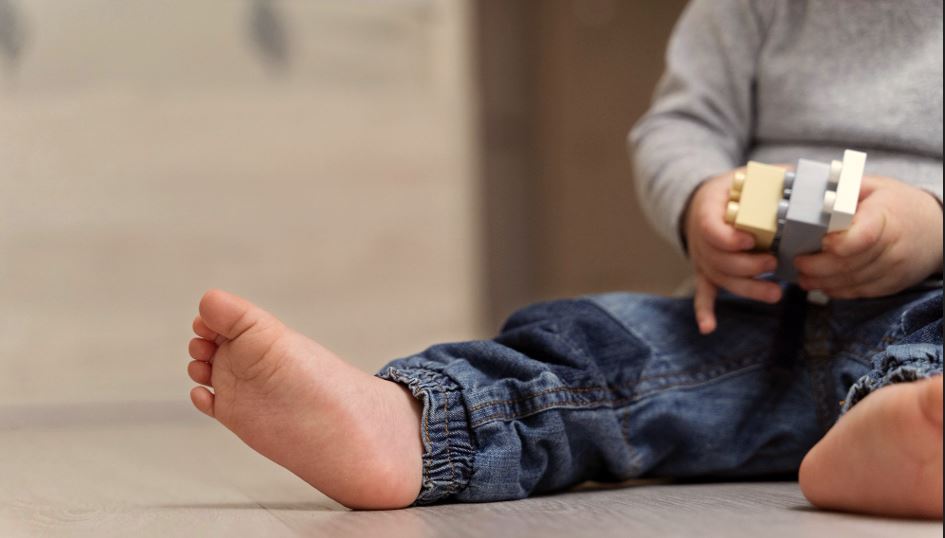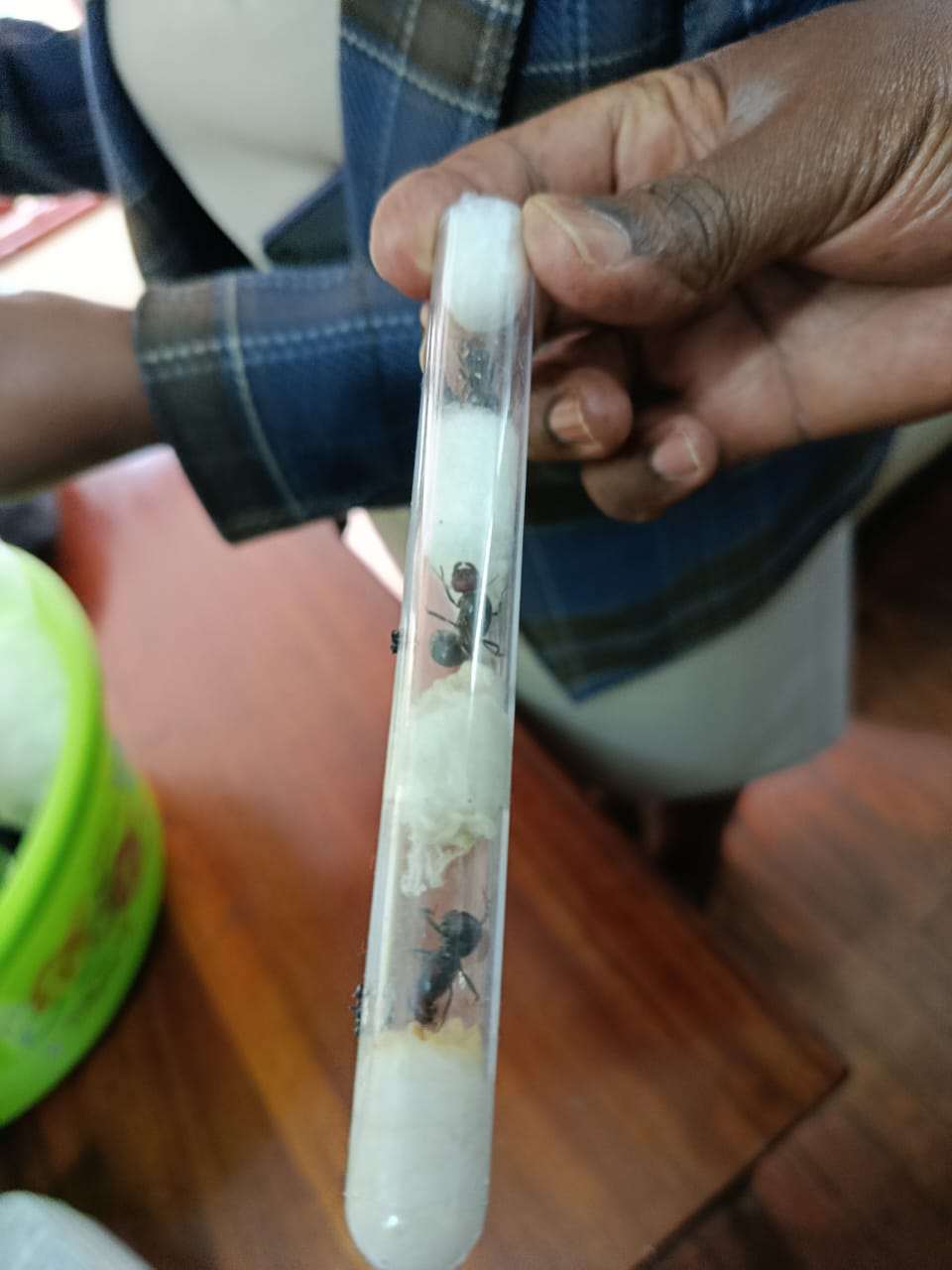Experts urge parents to prioritise children’s foot health to prevent long-term issues

By ensuring proper footwear, promoting physical activity, and staying vigilant for early signs of foot problems, parents can help their children avoid long-term foot issues.
Children's foot health is often overlooked, but it plays a vital role in their overall physical development.
Feet are the foundation of our mobility, and healthy feet are essential for balance, posture and movement.
Given that a child's feet undergo rapid development from birth, paying early attention to foot health can prevent long-term issues.
Paediatric physiotherapists and podiatrists across Kenya are urging parents to prioritise foot care, as improper footwear and undiagnosed foot conditions are becoming increasingly common in children.
"At birth, a child’s feet consist mainly of soft cartilage, and over the next few years, they gradually develop into bones. By the age of three, a child’s feet undergo significant changes, growing in size and complexity. By twelve, a child’s feet will have reached 90 per cent of their adult size. This rapid development makes the early childhood years crucial for ensuring proper foot structure and function. Foot care during this period is essential, as it lays the foundation for a lifetime of healthy mobility," explains Dr Mary Kamau, a paediatric physiotherapist.
Detecting foot problems early
Kamau told The Eastleigh Voice that detecting foot problems in the early stages of childhood is key to ensuring proper development.
She said many common foot conditions, such as flat feet, in-toeing, and out-toeing, can be corrected or managed if identified early because conditions left untreated can worsen over time and lead to more complex issues.
"Regular check-ups with a paediatrician or podiatrist are essential to catch any abnormalities before they impact your child’s mobility or posture," Kamau said.
"Foot health is directly tied to a child’s ability to move and engage in physical activities. Healthy feet provide the stability and balance needed for walking, running, and playing. Foot problems, like flat feet or misalignment, can limit a child's ability to participate in physical activities and sports, which are essential for their physical development," she said.
"Moreover, untreated foot conditions can lead to instability or difficulty maintaining a proper walking posture, affecting overall mobility."
The effects of poor foot health extend beyond the feet themselves.
Misaligned feet can cause a ripple effect on the body’s posture, potentially leading to pain and discomfort in the knees, hips, or even the lower back.
"For example, children with flat feet or poor arch support may experience strain on their lower limbs, causing discomfort that affects their overall posture. Proper foot care ensures that these issues are avoided, preventing a cascade of health problems that could impact a child’s growth and quality of life," explained Kamau.
Several foot issues are common in children, many of which can be treated or prevented with early intervention and proper footwear.
These include conditions such as flat feet, in-toeing, out-toeing, plantar warts, ingrown toenails, and Sever's disease.
Flat feet
"Flat feet occur when the arch of the foot does not develop properly. While this condition is common in toddlers, it may persist into later childhood, causing pain, difficulty walking, and discomfort in shoes. If flat feet continue beyond the age of five, it’s important to seek professional evaluation and advice," said Kamau.
In-toeing and out-toeing
"In-toeing (feet turning inward) and out-toeing (feet turning outward) are often noticeable when children begin to walk. In many cases, these conditions resolve as children grow. However, if they persist or cause problems such as frequent tripping, medical attention may be needed," Kamau said.
Plantar warts
"Plantar warts are caused by a viral infection and typically develop on the soles of the feet. They can cause pain and discomfort while walking or standing. While many warts go away on their own, some may require professional treatment if they persist or spread," said Kamau.
Ingrown toenails
"Ingrown toenails occur when the toenail grows into the surrounding skin, causing pain, swelling, and infection. This issue can result from improper nail trimming or ill-fitting shoes. In some cases, ingrown toenails require medical intervention to avoid complications," Kamau explained.
Sever’s disease
"Sever's disease is a common cause of heel pain in active children, particularly those involved in sports. This condition results from inflammation in the growth plate of the heel and typically resolves once the child’s growth plate matures. Treatment usually involves rest, stretching exercises, and heel pads," she said.
For athlete’s foot, Kamau urges parents and caregivers, especially for newborns or little children, to ensure they dry their baby’s toes if they find them wet, to avoid fungal infections that may result in an uncomfortable fishy smell.
Early identification and prevention of foot problems
"Being vigilant for early signs of foot problems can prevent long-term complications. Symptoms to look out for include frequent tripping or falling, avoidance of physical activity or walking, complaints of foot pain, smelly feet, and unusual walking patterns, such as persistent in-toeing or flat feet," said Kamau.
"If you notice any of these signs, consulting a podiatrist is crucial to ensuring your child’s foot health."
Kamau noted that the shoes children wear are pivotal in their foot health.
"Ill-fitting shoes, whether too tight or too loose, can contribute to a variety of foot problems. Proper footwear should allow for ample toe room, adequate arch support, and stability in fact, shoes should also be replaced regularly as they wear out to avoid placing undue stress on developing feet," Kamau advised.
"Encouraging your child to engage in physical activity is one of the best ways to promote healthy foot development. Activities that involve barefoot walking or games that engage the toes help strengthen foot muscles and improve coordination. Regular exercise also enhances flexibility and mobility, which are essential for overall physical growth."
"Proper foot hygiene is essential to prevent infections such as athlete’s foot or fungal toenail conditions. Teach your child to wash their feet daily, dry them thoroughly, and wear clean socks. Avoiding damp or shared spaces like public showers without flip-flops also reduces the risk of infection," said Kamau.
If your child experiences persistent foot issues, various treatment options are available.
"Physical therapy can help improve foot strength and balance, especially for children with conditions like flat feet. Custom orthotics, or shoe inserts, may be recommended to provide additional arch support and alignment," Kamau said.
"Topical treatments, such as antifungal creams or salicylic acid for warts, can effectively address common foot conditions. For more serious conditions, oral medications or other interventions may be required," she said.
While surgical solutions are rare, Kamau said some severe foot conditions may require surgery. For example, persistent flat feet or recurring ingrown toenails may necessitate minor surgical procedures to correct the problem and restore normal function.
Kamau said that parents should seek professional help if their child experiences significant pain, persistent foot problems, or difficulty walking, and it is crucial to seek help from a podiatrist.
“Early intervention can ensure that any underlying conditions are addressed before they cause further complications," said. Kamau.
"Experts at podiatric clinics can provide a tailored treatment plan to ensure your child’s feet develop properly."
Common questions about children's foot health:
At what age should I start worrying about my child's flat feet?
"While most children have flat feet due to a fat pad in the arch, the condition usually resolves as they grow. If flat feet persist beyond age five, or if your child experiences pain or difficulty with walking, a podiatrist consultation is recommended."
Can wearing the wrong shoe size cause foot problems in children?
"Yes, wearing ill-fitting shoes can lead to various foot problems such as bunions, hammertoes, or instability. Ensuring proper shoe size and fit is essential for foot health."
My child often complains of heel pain. Should I be concerned?
"Heel pain could be due to overuse or unsupportive shoes. If the pain persists, it could indicate Sever’s disease, a common condition in active children. A podiatrist can provide a proper diagnosis and treatment."
How can I prevent athlete's foot?
"Teach your child to maintain proper foot hygiene, and if she is still small, keep their feet dry, avoid sharing shoes, and wear protective footwear in public areas like bathrooms or pools."
Foot health is an often overlooked but essential aspect of a child’s overall well-being. By ensuring proper footwear, promoting physical activity, and staying vigilant for early signs of foot problems, parents can help their children avoid long-term foot issues.
If in doubt, consult with a podiatrist to ensure that your child's feet are developing correctly, providing a strong foundation for healthy growth and mobility.
Top Stories Today











































